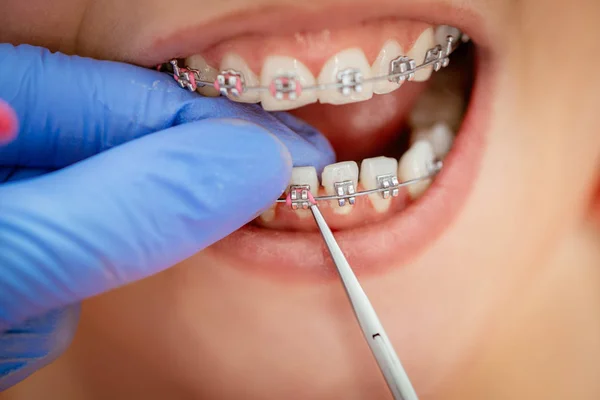
Many people seek orthodontic treatment because they desire a more attractive smile that boosts their self-confidence. However, the range of orthodontic treatment goes beyond purely aesthetic goals. With orthodontic treatment, you can correct a number of misalignments as well as bite problems. Therefore, your teeth work more effectively when you bite, chew and speak. Also, the orthodontic procedure improves your oral health.
This is not true. While both dentists and orthodontists can help you treat your oral health problems, an orthodontist has additional training and specializes in occlusion problems. While some dentists may offer orthodontic care or services, it is recommended that a patient receive proper orthodontic care from a licensed orthodontist.
With the advancement of technology in the field of orthodontic treatment, this is no longer true. Getting straight teeth has never been easier. There are a number of options that have been created with patient comfort in mind, such as clear aligners. Using advanced 3D technology, orthodontic treatments like clear aligners solve dental problems using tiny movements that reduce discomfort to almost zero.
With brackets and braces made of metal, this is possible. But we also offer a newer and more successful orthodontic treatment method that allows you to consume the food and drink of your choice. How? By removing them from your mouth when you eat only the foods you prefer. That's right! The main advantage of clear aligners is that they can be removed. In other words, you don't have to give up your lifestyle; just change it a little.
Another myth that is not true in every way. The results of orthodontic treatments such as clear aligners have been seen much faster than even braces. Most cases take 6 to 18 months, but the total time it takes for orthodontic treatment to work depends on a number of variables, including your unique situation and how strictly you adhere to treatment recommendations. A minor case may take only a few months to treat, but a case with more serious teeth alignment issues can take up to 18 months to treat.
In fact, orthodontic treatment is beneficial for patients of all ages. More and more adults are choosing orthodontic treatment because of its many benefits, including clear aligners. Clear aligners are the ideal tool for an adult to start on the road to a new smile because they are invisible, removable, provide faster results and require fewer visits to the orthodontist.
Orthodontic treatment prices vary according to the situation. It is true that it is an investment, but when you consider the entire cost, which includes the maintenance of the old ones and compare other traditional dental treatment options with more modern ones, such as clear aligners, the cost difference is not that big. Over time, cheaper solutions can be more dangerous.
Today's braces can be almost invisible, made of clear plastic or invisible, mounted on the back (lingual) side of the teeth.
Unlikely as braces are made of non-magnetic materials.